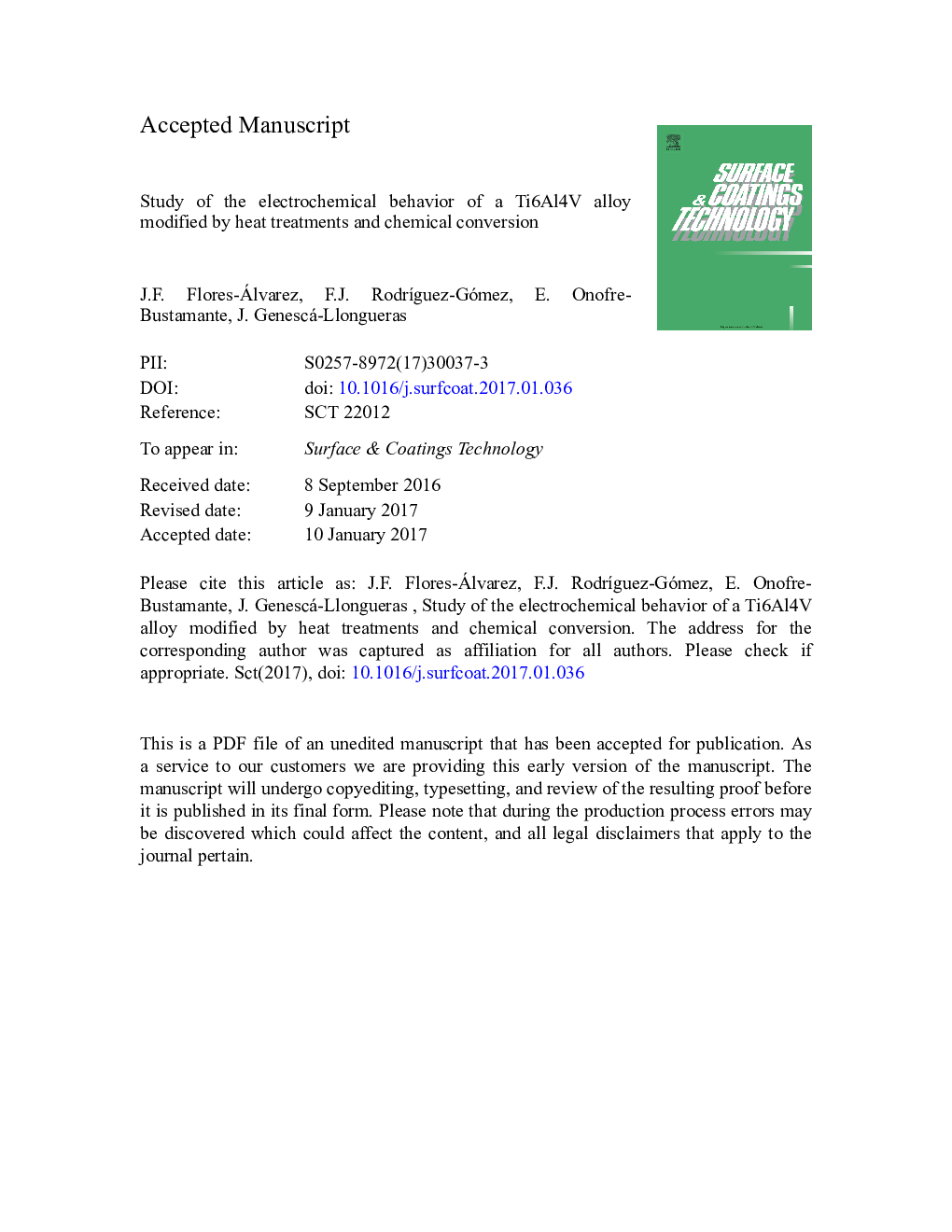| Article ID | Journal | Published Year | Pages | File Type |
|---|---|---|---|---|
| 5464706 | Surface and Coatings Technology | 2017 | 49 Pages |
Abstract
The present study examines the effect of the thermal annealing treatment temperature (TT 700 and 800 °C) and the effect of cerium as a chemical conversion treatment (CeCCT) on the Ti6Al4V alloy with the increase of the corrosion resistance of the base material. These coatings were evaluated using scanning electron microscopy (SEM) to determine the morphology and substrate coverage. Atomic force microscopy (AFM) was used to determine the level of roughness for each sample and technique by which the oxide was obtained. Additionally, curves polarization (CP) and electrochemical impedance spectroscopy (EIS) were conducted using an electrochemical characterization with Hank's saline (HK) as the electrolyte. The results show that with the thermal annealing treatment at 800 °C for one hour, the TiO2 film is mainly obtained in the rutile phase and the film will have increased anticorrosive properties if it is sealed with cerium. Therefore, the use of these treatments in permanent prosthesis could be possible.
Keywords
Related Topics
Physical Sciences and Engineering
Materials Science
Nanotechnology
Authors
J.F. Flores-Álvarez, F.J. RodrÃguez-Gómez, E. Onofre-Bustamante, J. Genescá-Llongueras,
